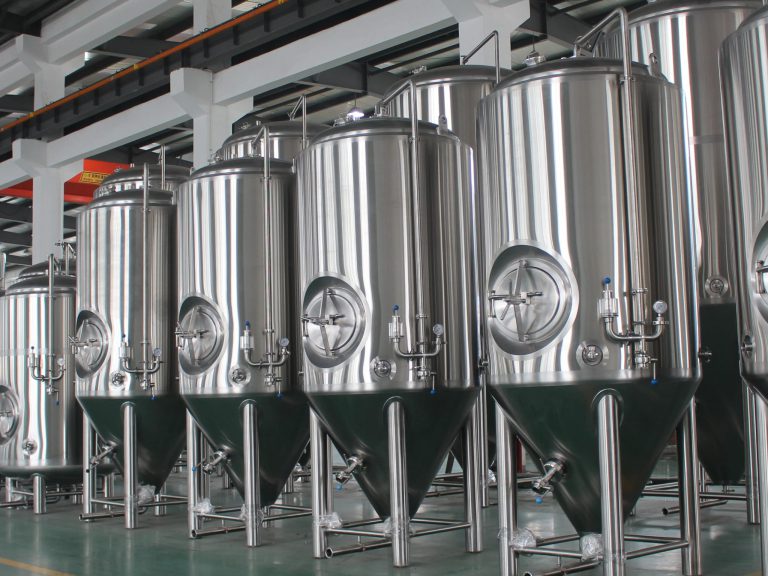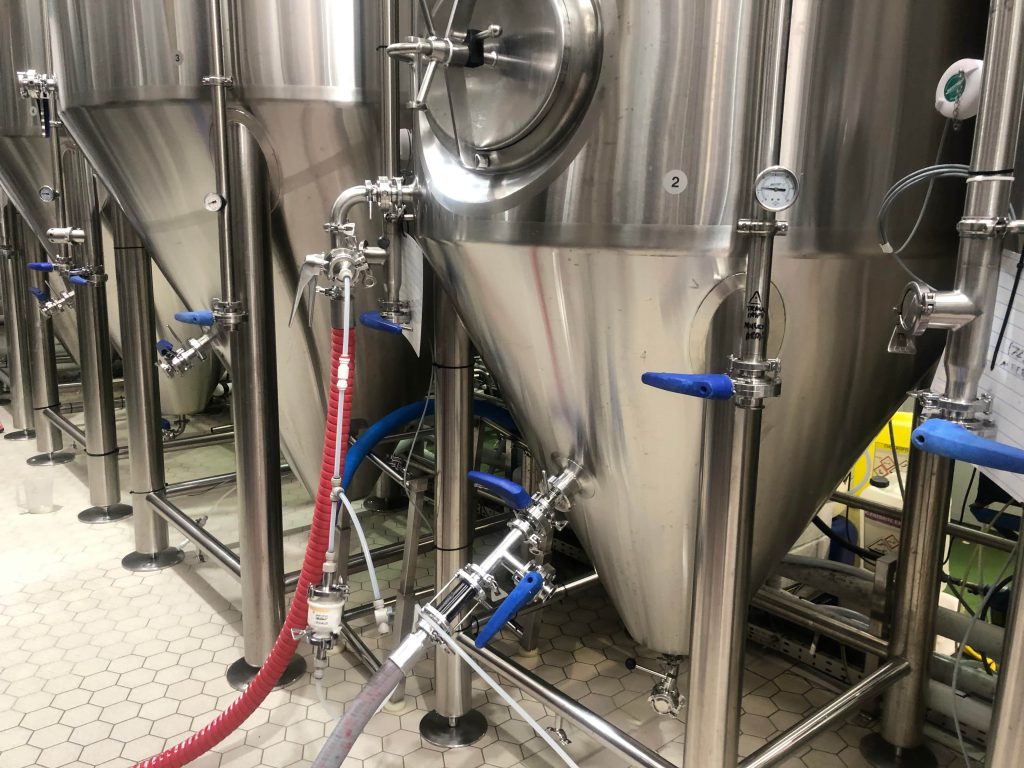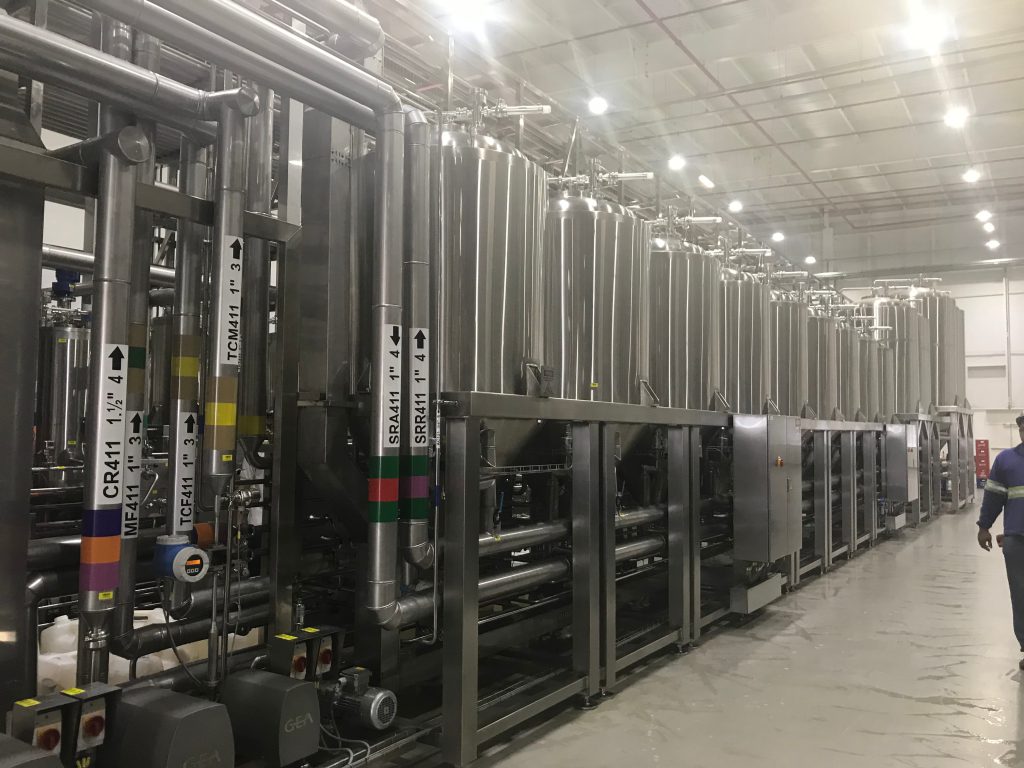Introdução

Os fermentadores de cerveja desempenham um papel fundamental no processo de fabricação de cerveja, influenciando o sabor, aroma e qualidade do produto final. Entender a dinâmica dos fermentadores de cerveja é essencial para cervejeiros que buscam criar cervejas excepcionais. Neste guia abrangente, nos aprofundamos na importância dos fermentadores de cerveja, seus tipos, operação e manutenção, esclarecendo seu papel crucial na fabricação de cerveja.
Tipos de Fermentadores de Cerveja
Beer fermenters come in various types, each with its unique characteristics and advantages. Understanding these types is fundamental for brewers to choose the most suitable option for their brewing needs.
- Fermentadores Abertos:
- Description: Open fermenters are traditional vessels used for fermentation, allowing the beer to be exposed to the surrounding environment.
- Characteristics: They offer greater yeast interaction with oxygen, resulting in distinct flavor profiles.
- Pros: Enhanced yeast activity and ester formation.
- Cons: Risk of contamination and oxidation.
- Closed Fermenters (Conical Fermenters):
- Description: Closed fermenters are sealed vessels that provide a controlled environment for fermentation.
- Characteristics: They prevent exposure to external contaminants and allow for precise temperature and pressure control.
- Pros: Reduced risk of contamination and oxidation, ideal for modern brewing practices.
- Cons: Limited yeast interaction with oxygen compared to open fermenters.
Operação de Fermentadores de Cerveja
The operation of beer fermenters is a crucial aspect of the brewing process, influencing fermentation kinetics, yeast activity, and the development of desirable flavors and aromas.
- Fermentation Process:
- Description: Fermentation is the conversion of sugars into alcohol and carbon dioxide by yeast.
- Key Factors: Temperature, yeast strain, oxygen levels, and fermentation time significantly impact the fermentation process.
- Optimal Conditions: Maintaining the ideal temperature range and providing adequate nutrients for yeast promote efficient fermentation.
- Gestão de leveduras:
- Description: Proper yeast management is essential for achieving desired flavor profiles and fermentation efficiency.
- Techniques: Pitching rate, yeast propagation, and temperature control are crucial aspects of yeast management.
- Importance: Healthy yeast populations contribute to consistent fermentation and the production of high-quality beer.
Role of Fermenters in Flavor Development
Beer fermenters play a vital role in shaping the flavor profile of the final product, influencing the production of aroma compounds, esters, and other flavor-active molecules.
- Ester Formation:
- Description: Esters are volatile compounds responsible for fruity and floral aromas in beer.
- Influence of Fermenters: Fermenter design and yeast management practices impact ester production during fermentation.
- Examples: Ethyl acetate, isoamyl acetate, and ethyl hexanoate are common esters contributing to beer aroma.
- Fusel Alcohols:
- Description: Fusel alcohols are higher alcohols produced during fermentation, contributing to the beer’s flavor and aroma.
- Factors Affecting Production: Fermentation temperature, yeast health, and wort composition influence fusel alcohol formation.
- Control Measures: Proper yeast management and temperature control help mitigate excessive fusel alcohol production, ensuring a balanced flavor profile.
A Comparison of Open and Closed Fermenters

Understanding the differences between open and closed fermenters is crucial for brewers when making decisions about their brewing equipment. As depicted in the table above, each type of fermenter offers distinct advantages and considerations. Open fermenters, with their greater exposure to oxygen and traditional methods, foster unique flavor development but come with risks of contamination. On the other hand, closed fermenters provide a controlled environment, minimizing contamination and offering precise temperature control, albeit with less yeast interaction with oxygen. Choosing the appropriate fermenter depends on various factors, including brewing style, desired flavor profiles, and available resources. Now, let’s delve deeper into the operational aspects of beer fermenters and their impact on flavor development.
| Aspecto | Fermentadores Abertos | Fermentadores Fechados |
|---|---|---|
| Exposure to Oxygen | Alto | Baixo |
| Risco de Contaminação | Alto | Baixo |
| Controle de temperatura | Limitado | Precise |
| Yeast Interaction | Greater | Controlled |
| Aroma Development | Distinctive | Consistent |
Conclusão
Beer fermenters are not merely vessels for fermentation; they are integral to the brewing process, influencing the flavor, aroma, and quality of beer. Whether utilizing open fermenters for traditional brewing practices or closed fermenters for modern precision, understanding the role of fermenters empowers brewers to craft exceptional brews. By optimizing fermenter selection, operation, and maintenance, brewers can unlock a world of creative possibilities and elevate the art of brewing.
Perguntas frequentes
Q:What is the optimal fermentação temperature for beer?
A:The optimal fermentation temperature varies depending on the yeast strain and beer style. Generally, ale fermentations occur between 60°F and 72°F (15.5°C to 22°C), while lager fermentations require cooler temperatures, typically between 45°F and 55°F (7°C to 13°C).
Q:How long does the fermentation process typically last?
A:The duration of fermentation varies based on factors such as yeast strain, wort composition, and fermentation temperature. Ale fermentations usually last around one to two weeks, while lager fermentations may extend to several weeks or even months.
Q:What are some common signs of fermentação activity?
A:Signs of fermentation activity include the presence of krausen (foamy head) on the surface of the beer, bubbling in the airlock or blow-off tube, and a noticeable increase in temperature within the fermenter.
Q:Can I use the same fermenter for different beer styles?
A:While it’s possible to use the same fermenter for different beer styles, thorough cleaning and sanitization are crucial to prevent flavor cross-contamination. Some brewers opt to dedicate specific fermenters to certain beer styles to maintain flavor purity.
Q:How do I troubleshoot fermentação issues?
A:Common fermentation issues include stuck fermentations, off-flavors, and yeast health problems. Troubleshooting involves assessing factors such as temperature control, yeast viability, and wort composition to identify and address the root cause of the issue.
This comprehensive guide aims to provide brewers with a deeper understanding of beer fermenters and their role in the brewing process. By mastering the nuances of fermenter selection, operation, and flavor development, brewers can embark on a journey of creativity and innovation in crafting exceptional beers. Cheers to the art and science of brewing!

